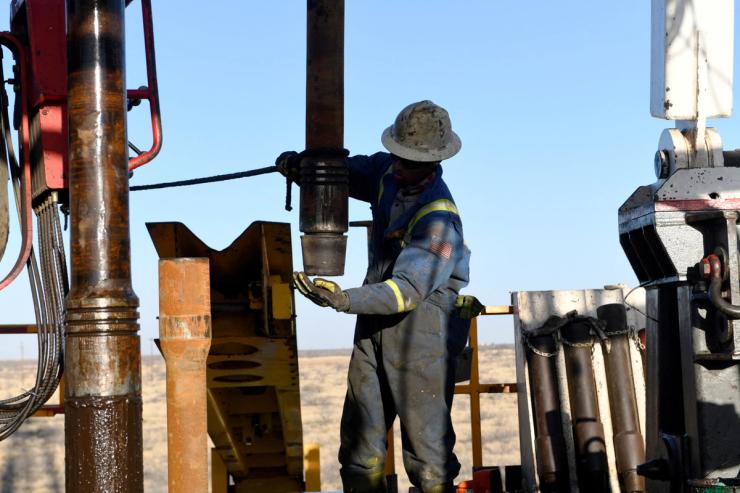The News
Quarterly earnings reports from oil and gas companies suggest the industry is already feeling the impact of US President Donald Trump’s trade wars, pointing to headaches ahead for its shareholders.
As much as Trump and his team are rhetorical boosters of Big Oil — “If I’m not president, you’re f*cked,” he reportedly told execs at Mar-a-Lago after the election — his unpredictable deployment of tariffs and enticement of OPEC countries to drill more have weighed down the oil price. Crude slid below $60 per barrel in the US this week, its lowest point since the pandemic, pushing the boundary of where many oil companies can turn a profit. It’s too soon to see the full toll that dip has had on the industry, since price falls began in earnest after the end of the first quarter. But red flags are going up.
Last week, US independent shale driller Matador became the first to admit it would need to shut down a rig because of dipping prices. European majors have also reported alarming results: Profits at Eni fell about 11% from the first quarter a year ago, by about 18% at TotalEnergies, and by 48% at BP. Chevron, ExxonMobil, and Shell all report tomorrow.
In this article:
Tim’s view
Booms and busts are as old as the oil industry itself: In 2023 most of these companies were posting record profits. And specialist energy investors seem willing to be patient, or even to use the oil price downturn to pick up undervalued stocks. The more interesting question is whether oil companies will be able to maintain their other shareholder benefits — share buybacks and dividend payments — which are a vital tool to keep investors interested in a sector that is prone to downturns and unlikely to see substantial growth ever again.
Eni, for one, said it will raise its dividend 5% and stick to plans to buy back €1.5 billion in shares this year, a strategy it would pay for by cutting its capital spending by about $500 million. Lower capital spending means a longer period of playing catch-up on production once oil prices start to rise again — and it means that “drill, baby, drill” will have to play second fiddle to appeasing Wall Street. But the tradeoff is a “template to follow,” HSBC analysts said. Total also said it would boost dividends and maintain buybacks, but that it would need to borrow to do so, a decision CEO Patrick Pouyanne said was justified by the “sound fundamentals of the business.” BP, whose ill-fated foray into renewable energy has left it on weaker footing than most of its peers, was the first to cut its buyback, by about $1 billion compared to the previous quarter.
At $60 oil, most oil companies’ dividends are probably safe, said Andrew Dittmar, principal analyst at the energy intelligence firm Enverus. Closer to $50, they’re at much greater risk. For investors, that may mean doubling down on the biggest companies whose higher-quality assets and lower operating costs make them better positioned to keep up their cash flow in times of low prices, he said.
Shell, Exxon, and Chevron will put that theory to the test tomorrow. Of the three, Chevron’s buyback is most at risk but should hold up for now, Biraj Borkhataria, head of global energy transition research at RBC Capital Markets, said in a note this week. For smaller drillers, favoring dividends and buybacks over capital spending has had mixed results: Matador announced a $400 million buyback plan but its share price is still about 23% lower than it was before Trump’s “Liberation Day” tariff announcement, while Bank of America analysts this week upgraded Diamondback Energy from “neutral” to “buy” because they expect it can maintain its dividend at a lower oil price.
The View From China
The mood in China’s oil patch is also fairly grim. Although state-owned PetroChina said it was able to bump its profit margin by cutting its expenses and selling more natural gas, its overall revenue for the quarter was down because of lower oil prices and lower demand for refined oil products. Soft oil prices also hit Sinopec and Cnooc. Weak oil demand in China — which until recently was one of the world’s few growing markets for oil — is a bad sign for Big Oil worldwide.
Notable
- A wide majority of global investors are still keen to invest in the energy transition and sustainability, according to a Morgan Stanley survey. More than half plan to increase their allocations to sustainability-related investments in the coming year, the survey found, with interest strongest among young investors.


